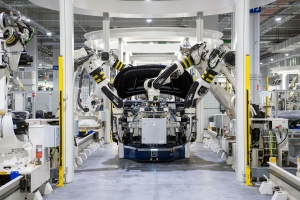As technology and urban development continue to advance, modern society faces a growing challenge: maintaining safety and sustainability in the face of climate change. The increase in extreme weather events, particularly floods, has placed a renewed emphasis on flood safety and preparedness. At the same time, the world is transitioning toward cleaner energy solutions, including the widespread adoption of ev chargers for electric vehicles. Balancing these two priorities—environmental resilience and technological progress—is essential for building safer, smarter, and more sustainable communities.
Understanding the Growing Threat of Flooding
Flooding is among the most frequent and destructive natural disasters worldwide. Rising sea levels, changing rainfall patterns, and expanding urbanization have made many regions more vulnerable than ever. Cities that once considered floods rare occurrences are now experiencing them more frequently, highlighting the urgent need for robust flood safety strategies.
Flooding can cause catastrophic damage to homes, infrastructure, and transportation systems. It also poses significant risks to public health through water contamination and the spread of disease. Yet, with proper planning, awareness, and infrastructure improvements, much of this damage can be mitigated.
Flood safety begins with understanding local risks and vulnerabilities. Communities must invest in effective drainage systems, early warning technologies, and urban planning that incorporates natural barriers like wetlands. Additionally, individuals can play their part by knowing how to prepare for floods, protect their property, and respond appropriately during emergencies.
The Connection Between Floods and Modern Infrastructure
As society continues to develop technologically, our dependence on electrical infrastructure has grown immensely. Homes, businesses, and transportation systems all rely on electricity to function efficiently. However, this dependence introduces new vulnerabilities during extreme weather events. Electrical systems can become hazardous when exposed to water, increasing the risk of electrocution, short circuits, and property damage.
This concern becomes especially relevant as electric vehicles (EVs) gain popularity. The installation and use of ev chargers require careful consideration of placement, waterproofing, and emergency shutdown systems in flood-prone areas. As cities expand their charging networks, integrating flood safety measures into design and installation becomes not just wise but necessary.
The Rise of Electric Mobility and Its Implications
Electric vehicles have become a symbol of the global shift toward sustainability. Their efficiency, quiet operation, and reduced emissions make them a crucial part of the effort to combat climate change. However, with this growing adoption comes the challenge of building safe and reliable infrastructure for charging.
Ev chargers are increasingly found in residential garages, public parking lots, and commercial spaces. These installations must meet high standards of electrical safety to prevent accidents and ensure consistent performance. In regions susceptible to flooding, these standards must also account for potential water exposure.
When designing charging stations, engineers must consider elevation, waterproofing, and drainage to reduce risk. For instance, placing ev chargers on raised platforms or walls can prevent contact with floodwater. Similarly, installing automatic cutoff systems that disable power when water levels rise helps ensure safety during emergencies.
Integrating Flood Safety Into Technological Progress
It might seem that flood safety and advanced technology exist in separate spheres, but in reality, they are deeply connected. Smart cities—those that leverage technology to improve quality of life—must address environmental risks as part of their development. Integrating sustainable energy systems, electric mobility, and resilient infrastructure creates communities capable of withstanding both natural and technological challenges.
Modern ev chargers can even play a role in emergency response. Many charging stations now incorporate smart monitoring systems that track weather conditions and energy usage. During a flood warning, these systems can alert operators to shut down power, reducing hazards and protecting infrastructure. Some chargers also feature backup power capabilities, allowing them to supply limited energy to essential systems during outages.
By viewing innovation through the lens of environmental safety, society can ensure that technological progress does not come at the expense of human wellbeing.
Preparing Homes and Businesses for Future Challenges
As floods become more frequent and unpredictable, homeowners and business owners must adapt their properties to minimize risk. This involves not only protecting physical structures but also securing energy systems. Installing ev chargers at higher elevations, away from basements or low-lying areas, is a practical step. Ensuring that electrical systems meet waterproofing standards further enhances resilience.
Similarly, property owners should have clear flood response plans. This includes knowing when and how to shut off power, relocate vehicles, and secure important documents or equipment. Communities can organize education campaigns focused on flood safety to ensure everyone understands how to act quickly and safely during an emergency.
Preventive actions taken today can save lives, property, and countless resources in the future. The intersection of safety awareness and technological advancement provides the foundation for stronger, smarter urban environments.
The Role of Policy and Innovation
Governments and industry leaders play a crucial role in shaping a future where sustainability and safety coexist. Regulations that mandate higher standards for ev chargers in flood-prone areas, as well as city planning that prioritizes flood safety, will be key to reducing risks. Incentives for homeowners to install flood-resistant electrical systems and renewable energy technologies can further enhance community resilience.
Innovation, too, continues to advance. Engineers are developing new materials and smart technologies designed to withstand extreme weather. Some next-generation charging systems are even being designed with self-sealing or submersible components, making them safer during unexpected flooding events. These developments demonstrate how the worlds of technology and environmental safety can evolve hand in hand.
A Future Defined by Safety and Sustainability
The path forward is clear: as humanity embraces innovation, it must also strengthen its commitment to safety and environmental stewardship. The rise of electric mobility brings new opportunities for cleaner living, while a deeper understanding of flood safety ensures that progress remains secure and sustainable.





